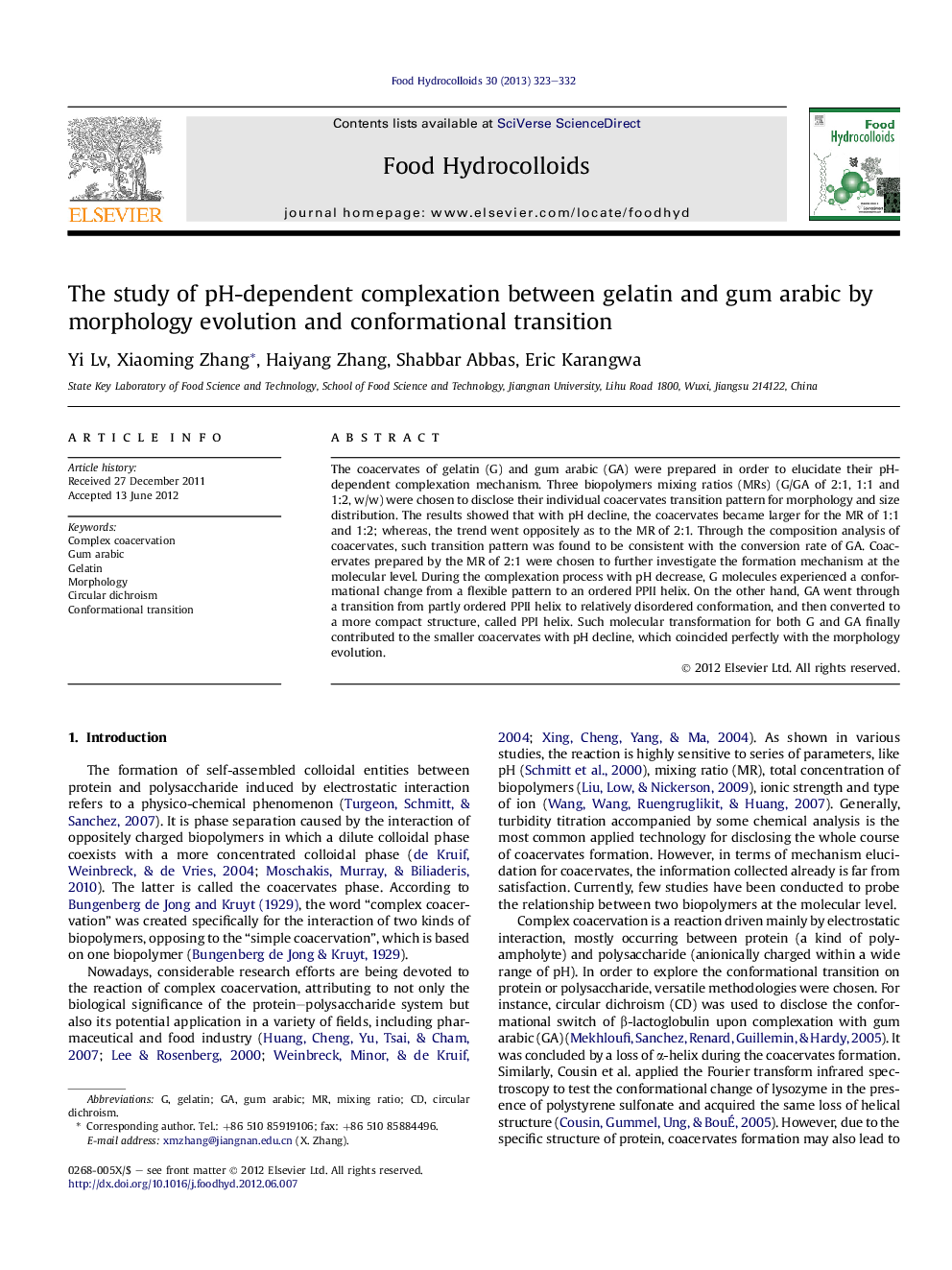| Article ID | Journal | Published Year | Pages | File Type |
|---|---|---|---|---|
| 604756 | Food Hydrocolloids | 2013 | 10 Pages |
The coacervates of gelatin (G) and gum arabic (GA) were prepared in order to elucidate their pH-dependent complexation mechanism. Three biopolymers mixing ratios (MRs) (G/GA of 2:1, 1:1 and 1:2, w/w) were chosen to disclose their individual coacervates transition pattern for morphology and size distribution. The results showed that with pH decline, the coacervates became larger for the MR of 1:1 and 1:2; whereas, the trend went oppositely as to the MR of 2:1. Through the composition analysis of coacervates, such transition pattern was found to be consistent with the conversion rate of GA. Coacervates prepared by the MR of 2:1 were chosen to further investigate the formation mechanism at the molecular level. During the complexation process with pH decrease, G molecules experienced a conformational change from a flexible pattern to an ordered PPII helix. On the other hand, GA went through a transition from partly ordered PPII helix to relatively disordered conformation, and then converted to a more compact structure, called PPI helix. Such molecular transformation for both G and GA finally contributed to the smaller coacervates with pH decline, which coincided perfectly with the morphology evolution.
Graphical abstractFigure optionsDownload full-size imageDownload as PowerPoint slide
